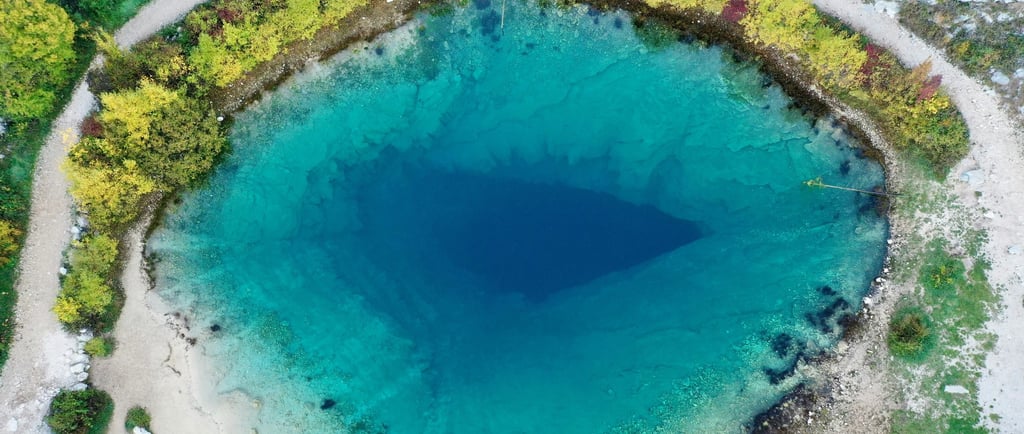How to Visit the Great Blue Hole in Belize
Planning a trip to the Great Blue Hole in Belize? Here’s your complete guide to its location, diving tours, and tips for the perfect adventure.
Deepika
7/4/20253 min read


Why the Great Blue Hole Is So Famous?
Bezile’s Great blue hole is one of the most natural wonders in the world. This perfectly circular marine sinkhole stretches over 1,000 feet across and plunges more than 400 feet deep into the ocean floor. What makes it even more fascinating is its striking contrast of deep blue waters surrounded by a vibrant turquoise reef.
Famed explorer Jacques Cousteau once called the Great Blue Hole one of the top scuba diving sites on Earth—and it’s easy to see why. Beneath the surface, you’ll find ancient stalactites, rare fish, and crystal-clear visibility. It’s a must-see for divers, snorkelers, and curious travelers alike.
Where Is the Great Blue Hole in Belize?
The Great Blue Hole in Belize is located about 43 miles offshore in the center of Lighthouse Reef Atoll. This stunning marine sinkhole is part of the Belize Barrier Reef Reserve System, a UNESCO World Heritage Site known for its rich biodiversity and coral reefs. Most visitors reach the Blue Hole Belize location by boat from popular coastal hubs like Belize City, Caye Caulker, or Ambergris Caye. The boat ride typically takes two to two and a half hours. Despite its remote setting, getting there is straightforward and the breathtaking ocean views make the journey unforgettable.
How to Visit the Great Blue Hole
There are two main ways to experience the Great Blue Hole: by sea or by air.
By boat: You can join a guided dive or snorkel trip from places like San Pedro or Caye Caulker. These full-day tours often include multiple stops at nearby reefs.
By plane or helicopter: For a once-in-a-lifetime aerial view, consider booking a scenic flyover. From above, the Great Blue Hole appears as a deep sapphire eye in the middle of the sea.
Whether you're underwater or in the sky, seeing the Great Blue Hole is unforgettable.
Best Time to Visit the Great Blue Hole
The best time to visit the Great Blue Hole in Belize is between April and June. During these months, the weather is warm and dry, and the sea is calm, ideal conditions for diving, snorkeling, or scenic flights.
Avoid the rainy season (September to November) if possible, as heavy rains and tropical storms may affect visibility and tour schedules. The high season runs from December to April, so expect more crowds and higher prices.
If you're a diver, check for calm wind conditions and visibility updates before booking your excursion.
How to Dive or Snorkel the Great Blue Hole?
Diving into the Great Blue Hole is on many scuba divers’ bucket lists. Most tours are designed for advanced divers, as the descent goes down to 130 feet (40 meters) or more. Inside, you'll discover dramatic underwater stalactites, Caribbean reef sharks, and a surreal atmosphere.
Don't worry if you're not a certified diver—some tours offer snorkeling near the surface. While you won’t see the deep caverns, you’ll still enjoy vibrant coral formations and colorful marine life along the reef’s edge.
All dives and snorkel trips are guided by certified professionals, and equipment is usually provided.
Can You See the Great Blue Hole Without Diving?
Absolutely! If diving isn’t your thing, you can still admire the Great Blue Hole in Belize from above. Scenic flights are popular and provide the most iconic view of the hole’s circular shape against the Caribbean blues.
Many tour companies in Belize City or San Pedro offer helicopter or small plane tours. Flights usually last 1–2 hours and include commentary from local guides. The aerial perspective gives you a real sense of the hole's size, beauty, and mystery—no wetsuit needed.
Tips for Visiting the Great Blue Hole in Belize
Here are a few helpful tips to make your experience unforgettable:
Book early: Tours, especially scenic flights, can fill up fast in high season.
Bring reef-safe sunscreen: Help protect Belize’s marine ecosystems.
Wear a rash guard or wetsuit: The sun and saltwater can be harsh.
Choose a reputable tour company: Look for certified guides and strong safety records.
Hydrate and rest well before diving to avoid decompression issues.
Bring a GoPro or waterproof camera: The visuals here are out of this world.
Whether you're diving or flying, preparation makes all the difference.
DuoNomadS
Follow us on
© 2025. All rights reserved.
MORE INFORMATION
REACH US